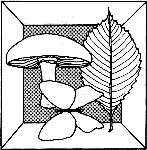Collection and Preservation of Plant Material and Soil When possible, collect whole plants along with some of the soil from around the roots. If the plant is too large for collection, examine and collect samples from different parts. In addition, collect samples from other plants showing different stages of the problem and from at least one that is healthy. When collecting a branch or a stem sample, take a wedge or section that includes both dead and apparently healthy tissue. This advancing margin frequently contains the living pathogen. Keep all plant materials moist and cool. Place host material in a plastic bag with moist toweling and put it in a cool place. Vehicles parked in the sun in the summer can become hot enough to kill pathogens. As a result , they cannot be isolated from the host. Put a sample of the soil in a plastic bag, but separate from the associated plant specimen. Keep the soil cool before shipment. |
Forest Pests: Insects, Diseases & Other Damage Agents |

|
|


